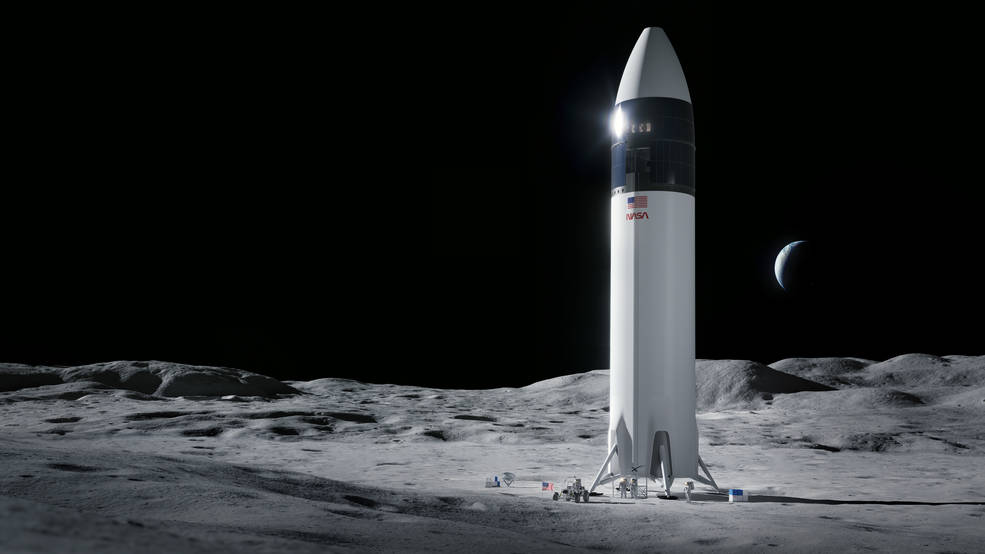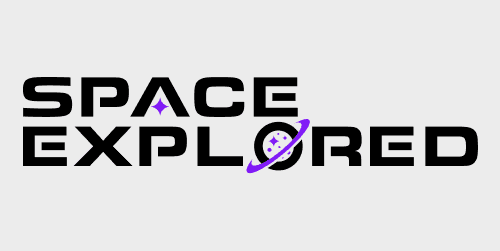
Blue Origin may just have a shot at taking away SpaceX’s prized Artemis 3 crewed lunar landing, as the company has fallen behind its goals to get an HLS Starship variant ready for a 2027 attempt. Now NASA is looking at new options that may be able to get a lander ready faster.
Acting NASA Administrator Sean Duffy said on CNBC Monday that it is looking to open up companies to bid on beating SpaceX at its own game, moving faster than anyone else for the ability to land astronauts on the lunar surface in Artemis 3.
“I love SpaceX; it’s an amazing company. The problem is, they’re behind… and we’re in a race against China. So I’m going to open up the contract. I’m going to let other space companies compete with SpaceX,” Duffy said on CNBC Squawk Box.
While this isn’t 100% official yet, the agency is planning to take the proposal and submit a proper Request for Proposals for companies to bid. One company that Duffy named that they’d like to hear from is Blue Origin, a bitter rival of SpaceX that is also in the Human Landing System running with its Blue Moon lander; however, for later missions than Artemis 3.
SpaceX won the Artemis HLS landing contract back in 2021 with a value of $2.9 billion. A chunk of that has already been paid out to SpaceX for work toward getting Starship development up and running and for the development of a lunar landing variant of the rocket.
NASA and SpaceX have showcased the work under this contract with views of inside mockups and simulators both at SpaceX’s Hawthorne and Starbase facilities.
However, delays throughout 2025 have seemingly eroded the agency’s trust in Starship being ready on time for the 2027 launch timetable.
Space Explored’s Take
If you’ve been following the industry as a whole over the year, this change of heart in SpaceX shouldn’t be a massive surprise. After each hiccup during a Starship test flight, rumbles of concern from NASA came to light about the company’s ability to meet its contract’s timeline.
It’s been reported that NASA’s historically delayed and over-budget Space Launch System rocket, the means of transportation for the crew of Artemis 3, is no longer the leading problem for the mission’s timeline; it is now Starship.
Even with Starship’s recent success on the final Starship Version 2 vehicle, the company is still not out of the woods yet in getting the vehicle ready for a landing on the Moon by 2027.
SpaceX has to not just test and validate an entirely new vehicle design on expendable launches; it then has to learn how to reuse it rapidly, invent a way to refuel the massive lander in orbit (which has never been done before), and build and test HLS Starship vehicles.
While Artemis 3’s 2027 launch date is likely a pipe dream for multiple reasons, Starship could very well be years away from being able to land on the Moon.
Now, with NASA opening up Artemis 3 to companies like Blue Origin and even Lockheed Martin, 2027 could be back in play; however, this process opens up new concerns of its own.
Is NASA moving too fast with crew safety?
Acting Administrator Duffy very clearly said during his CNBC interview that they are looking for the fastest option, not the best or safest: “Whatever one can get us there first… we’re going to take.”
While I don’t doubt NASA’s promise to crew safety, as it has shown it stands by during the development of its Commercial Crew Program vehicles, when someone is in a “race” and feels like they’re losing, blinders can be placed on crucial problem-solving individuals, leading to mistakes.
NASA needs to remember that this “race” Congress has stated we are in with China in getting to the Moon was won back in 1969 with the Apollo landings. NASA has been to the Moon and should at least act like it has done this before.
A fast and loose mission to beat China may not be needed if it means still being able to beat China’s 2030 deadline with a safe and reasonable new landing provider.
FTC: We use income earning auto affiliate links. More.




Comments